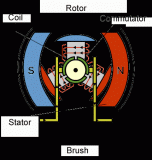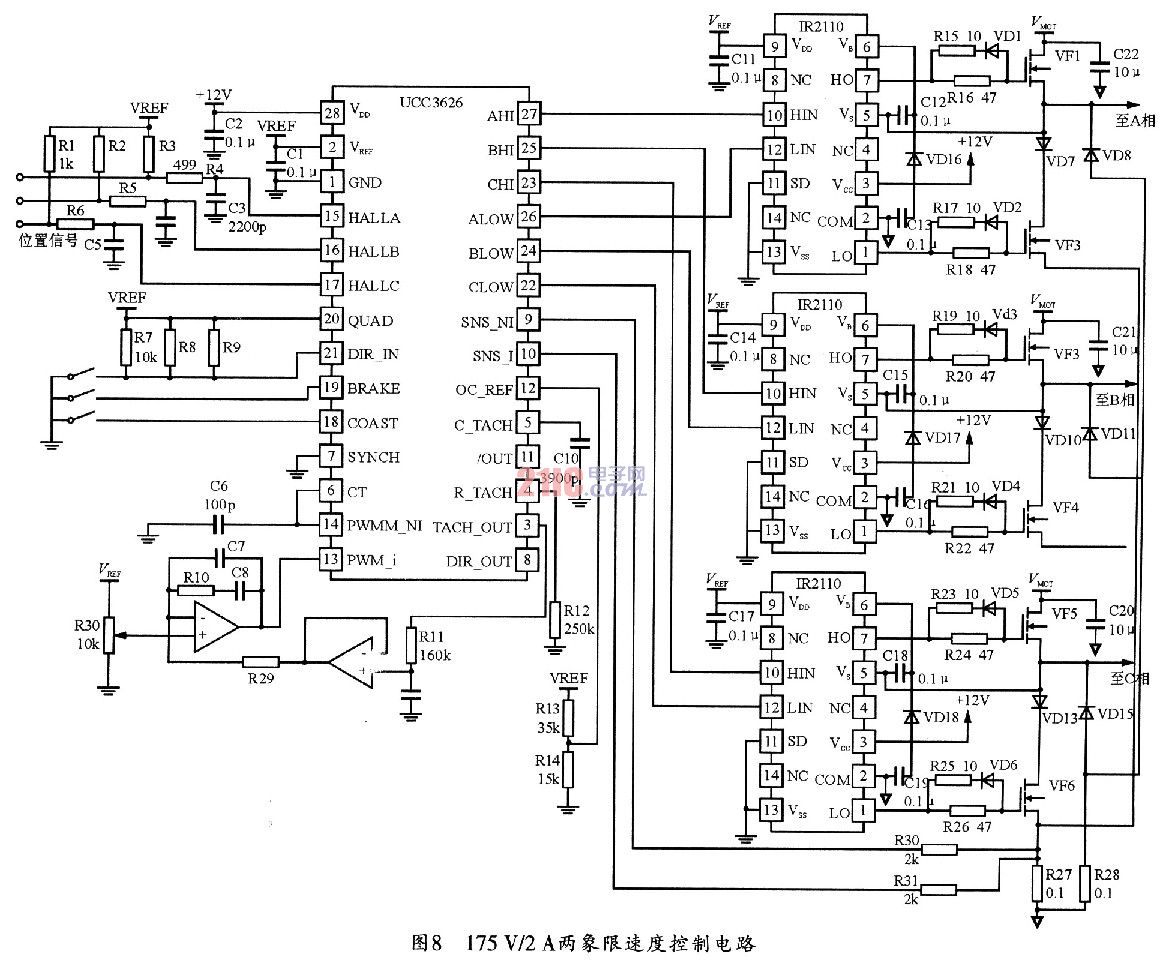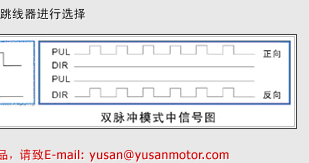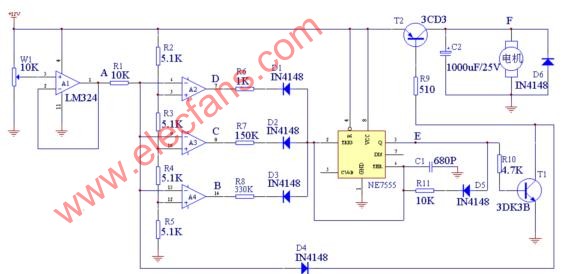Overview
For the inexperienced designer, understanding the electrical characteristics presented in an integrated circuit data sheet can be confusing. If misinterpreted, a new design could prove disastrous. This tutorial is intended to demystify the steady state characteristics of the Maxim microcontroller product family.The DS80C320 is only one of numerous high-speed microcontrollers Maxim offers. By understanding the DC characteristics of this microcontroller, the novice designer has a better appreciation for other microcontrollers with added features.
Absolute Maximum Rating
The Absolute Maximum Rating section of the DS80C320 data sheet describes the stress conditions relative to the device. These parameters do not set the maximum and minimum operating conditions the device tolerates over extended periods of time. Instead, they are the limiting operational and environmental conditions the device was stressed. If the device is exposed to these parameters for extended periods of time, no guarantee is made and device reliability device can be affected. For example, during the assembly process of a printed circuit board, the microcontroller was exposed to a solder temperature of +180°C for 15 seconds. The absolute maximum rating states soldering temperature is +160°C for 10 seconds. In this case, the microcontroller's reliability has been compromised.DC Electrical Characteristics
The DC Electrical Characteristics found in the table are specific to a temperature range and operating voltage. The temperature range applies to both the commercial (0°C to +70°C) and industrial specifications (-40°C to +85°C).This application note looks at the DC Electrical Characteristics table for the DS80C320 microcontroller and examines all of the parameters of this device and what they mean to designers.
The table is broken into seven columns labeled Parameter, Symbol, Minimum (Min), Typical (Typ), Maximum (Max), Unit, and Notes. The numbers in the Notes column point to a description of conditions associated with the values given in the table. These are found immediately following the DC Electrical Characteristics table. It is important to understand these conditions.
DS80C320 DC Electrical Characteristics
| PARAMETER | SYMBOL | MIN | TYP | MAX | UNITS | NOTES |
| Operating Supply Voltage | VCC | 4.5 | 5.0 | 5.5 | V | 1 |
The operating supply voltage is the voltage applied to the VCC pin on the microcontroller from the power supply. Typical voltage for a digital device is +5.0V ±10%, thus the min and max rating. It should be noted that a clean, regulated supply should be used in any digital design. Noise, such as voltage spikes, affect the reliability of the device if it exceeds the absolute maximum rating established at the beginning of the data sheet. Note 1 specifies all voltages are referenced to ground.
| PARAMETER | SYMBOL | MIN | TYP | MAX | UNITS | NOTES |
| Power-Fail Warning | VPFW | 4.25 | 4.38 | 4.55 | V | 1 |
The DS80C320 incorporates a precision bandgap voltage reference to determine when VCC is out of tolerance. The bandgap reference provides a precise voltage to compare with VCC. If VCC should fall, the power monitor compares it to the bandgap reference. Analog circuits internal to the microcontroller detect when VCC crossed the predetermined power-fail warning threshold. An optional early warning power-fail interrupt can be generated in the event of a low power-supply voltage. When VCC reaches VPFW threshold, the device generates a power-fail interrupt.
| PARAMETER | SYMBOL | MIN | TYP | MAX | UNITS | NOTES |
| Minimum Operating Voltage | VRST | 4.0 | 4.1 | 4.25 | V | 1, 12 |
The minimum operating voltage parameter describes the power-supply voltage range that invokes a power-fail reset. Prior to this condition, the power-supply voltage must pass through the power-fail warning minimum voltage. If the power-fail warning interrupt is not enabled and VCC crosses the threshold of minimum operating voltage, a power-fail reset occurs. Upon a power-fail reset, the device halts operations and places all the output pins to the reset state. When the VCC voltage is restored and exceeds VRST, the internal detection circuits activate the on-chip crystal oscillator and count 65,536 oscillator clocks. If VCC falls below the VRST threshold during this startup period, the process restarts.
| PARAMETER | SYMBOL | MIN | TYP | MAX | UNITS | NOTES |
| Supply Current Active Mode at 25MHz | ICC | 30 | 45 | mA | 2 |
If a milliampere meter were connected in series with the VCC pin, it would indicate the total device current draw, ICC. The supply current is a function of the operating frequency. Following the DC Characteristics table in the DS80C320 data sheet is an ICC versus frequency curve. Notice how ICC increases as frequency is increased. Also notice VCC is held constant. The values of ICC found in the data sheet is measured under a controlled condition. An external 25MHz clock source drives the XTAL1 pin of the microcontroller. The VCC and RST pins are connected to 5.5V. All other pins on the DS80C320 are disconnected.
| PARAMETER | SYMBOL | MIN | TYP | MAX | UNITS | NOTES |
| Supply Current Idle Mode at 25MHz | IIDLE | 15 | 25 | mA | 3 |
When idle mode is invoked by software, internal clocks, serial ports, and timers will remain running. However, no memory access is performed in this mode. As stated earlier, power consumption is related to crystal frequency. Idle mode current is a function of the crystal frequency in the final circuit design. The supply current in idle mode is measured the same way as the supply current in active mode, except the RST pin is grounded.
| PARAMETER | SYMBOL | MIN | TYP | MAX | UNITS | NOTES |
| Supply Current Stop Mode, Bandgap Reference Disabled | ISTOP | 0.01 | 1 | μA | 4 |
Stop mode provides lower power consumption than idle mode due to the halting of all clock operations. To achieve even more power reduction, the bandgap reference can be disabled by software. This is the default state for stop mode. This current is measured the same way as active and idle modes, except there is no clock source. The XTAL1 pin and RST pin is grounded, VCC is 5.5V and all other pins are disconnected.
| PARAMETER | SYMBOL | MIN | TYP | MAX | UNITS | NOTES |
| Supply Current Stop Mode, Bandgap Reference Enabled | ISPBG | 50 | 80 | μA | 4, 10 |
When stop mode is invoked, it puts the microcontroller into the lowest power state. A static condition exists, whereas timers and serial communications are stopped and processing is halted. To exit stop mode, a power-fail interrupt or a non-clocked external interrupt can be used. The bandgap reference must be enabled if a power-fail interrupt is used to exit stop mode. In this case, supply current is higher due to the current requirements of the bandgap reference circuit. The DS80C320 typically draws 50μA in this condition and 80μA maximum. Notes 4 and 10 state XTAL1 and RST pins are grounded, VCC is 5.5V and if the device is used over the industrial temperature range, the maximum current could be as high as 200μA.
| PARAMETER | SYMBOL | MIN | TYP | MAX | UNITS | NOTES |
| Input Low Level | VIL | -0.3 | +0.8 | V | 1 |
The input low level is the voltage range for all input pins at a logic level low. Notice the minimum voltage is -0.3V. Because the DS80C320 is powered by +VCC and referenced to ground, negative voltages in access of -0.3V can cause unreliable operation of the microcontroller or worse yet, damage the device. Voltages greater than +0.8V can be interpreted as an undefined state or logic level high.
| PARAMETER | SYMBOL | MIN | TYP | MAX | UNITS | NOTES |
| Input High Level (Except XTAL1 and RST) | VIH1 | 2.0 | VCC+0.3 | V | 1 |
The input high level is the voltage range for all input pins except XTAL1 and RST at logic level high. Voltages less than the minimum stated value can be interpreted as an undefined state or logic level low and voltages exceeding the maximum value, VCC + 0.3V can cause damage to the microcontroller.
| PARAMETER | SYMBOL | MIN | TYP | MAX | UNITS | NOTES |
| Input High Level, XTAL1 and RST | VIH2 | 3.5 | VCC+0.3 | V | 1 |
This parameter is specific to the XTAL1 and RST pins. Notice the minimum voltage is higher for these two pins as compared to the other pins on the microcontroller. This was done to improve the noise immunity for the XTAL1 and RST pins as compared to the rest of the pins on the device. If the maximum voltage is exceeded, the microcontroller can be damaged.
| PARAMETER | SYMBOL | MIN | TYP | MAX | UNITS | NOTES |
| Output Low Voltage Ports 1, 3 at IOL = 1.6mA | VOL1 | 0.45 | V | 1 |
When the pins associated with Ports 1 and 3 are at a logic low state, they sink current from an external source. The source could be the input of a logic gate or a device such as a pullup resistor. This parameter states the voltage measured at the port pin is no more than 0.45V when sinking 1.6mA.
| PARAMETER | SYMBOL | MIN | TYP | MAX | UNITS | NOTES |
| Output Low Voltage Ports 0, 2, ALE, active-low PSEN at IOL = 3.2mA | VOL2 | 0.45 | V | 1, 5 |
This is an important parameter to understand about Port 0 on the DS80C320. Port 0 on 8051-type microcontrollers are open-drain. All other ports have internal pullup resistors. To use Port 0 as a general-purpose I/O would require some form of pullup resistance. If external pullup resistors are used on Port 0, the maximum voltage on Port 0 pins do not exceed the maximum voltage value as long as the sink current does not exceed IOL. The DS80C320 is different in one respect. It has no latch on Port 0 because there is no internal program memory. Therefore, Port 0 cannot be used as a general-purpose I/O port. When addressing external-memory devices, Port 0, 2, ALE, and active-low PSEN pins do not exceed 0.45V when sinking 3.2mA.
| PARAMETER | SYMBOL | MIN | TYP | MAX | UNITS | NOTES |
| Output High Voltage Ports 1, 3, ALE, active-low PSEN at IOH = -50μA | VOH1 | 2.4 | V | 1, 6 |
When the DS80C320 outputs a logic high level, the load connected to the port pin or ALE or active-low PSEN pins cause a current flow from the microcontroller to the load. The negative number for IOH indicates the current is sourced from the microcontroller. If the external load does not sink more than 50μA, the minimum output voltage measured at the pins are equal to or greater than 2.4V. The test condition used for this parameter assumes RST and VCC are at the same potential. This condition mimics operation of the pins in I/O mode.
| PARAMETER | SYMBOL | MIN | TYP | MAX | UNITS | NOTES |
| Output High Voltage Ports 1, 3, at IOH = -1.5mA | VOH2 | 2.4 | V | 1, 7 |
This condition reflects the port in transition mode, i.e., changing from a 0 to 1 state. When the port pins are changed from 0 to 1, a one-shot circuit drives the port pins hard for two clock cycles to assist in a strong pullup. At the end of the two-cycle transition, a weak pullup replaces the strong pullup to hold the port in a logic 1 state. This weak pullup remains until the next 1-to-0 transition. During the 0-to-1 transition, the voltage at these pins is not less than 2.4V, provided the load does not draw more than 1.5mA from the microcontroller.
| PARAMETER | SYMBOL | MIN | TYP | MAX | UNITS | NOTES |
| Output High Voltage Ports 0, 2, ALE, active-low PSEN at IOH = -8mA | VOH3 | 2.4 | V | 1, 5 |
This parameter states the minimum high-output voltage on Port 0 and Port 2 pins and ALE and active-low PSEN is not less than 2.4V when addressing external memory and the microcontroller is sourcing a current of 8mA.
| PARAMETER | SYMBOL | MIN | TYP | MAX | UNITS | NOTES |
| Input Low Current Ports 1, 3 at 0.45V | IIL | -55 | μA | 11 |
When the port pin is configured as an input, it is internally pulled to logic 1. Depending on the external load, the port pin sources current. In this case, a maximum current is sourced from the microcontroller port pins when the pin is loaded to an external voltage drop of 0.45V. When 0.45V is present at the port pin, a maximum current of 55μA flows from the pin.
| PARAMETER | SYMBOL | MIN | TYP | MAX | UNITS | NOTES |
| Transition Current from 1 to 0 Ports 1, 3 at 2V | ITL | -650 | μA | 8 |
When the port pins switch states from logic 1 to logic 0, current flows out of the pins to the external load. The maximum current occurs at approximately 2V during the transition from VCC to 0V.
| PARAMETER | SYMBOL | MIN | TYP | MAX | UNITS | NOTES |
| Input Leakage Port 0, Bus Mode | IL | -300 | +300 | μA | 9 |
When port 0 is used as an address bus for an external device, a leakage current flows when the input voltage is between VCC and 0.45V. A weak holding latch is employed in Port 0 during bus mode. During the voltage transition, the port pins can either sink or source current. The peak current occurs at approximately 2V during the transition.
| PARAMETER | SYMBOL | MIN | TYP | MAX | UNITS | NOTES |
| RST Pulldown Resistance | RRST | 50 | 170 | kΩ |
The reset pin on the DS80C320 has an internal pulldown resistor. The minimum resistance is 50kΩ and the maximum resistance is 170kΩ. This allows the user to incorporate various wired-OR conditions for reset. On some versions of 8051-type microcontrollers, an external RC combination is required to implement a power-up reset. This function is provided internal to the DS80C320.
 電子發(fā)燒友App
電子發(fā)燒友App





































評(píng)論